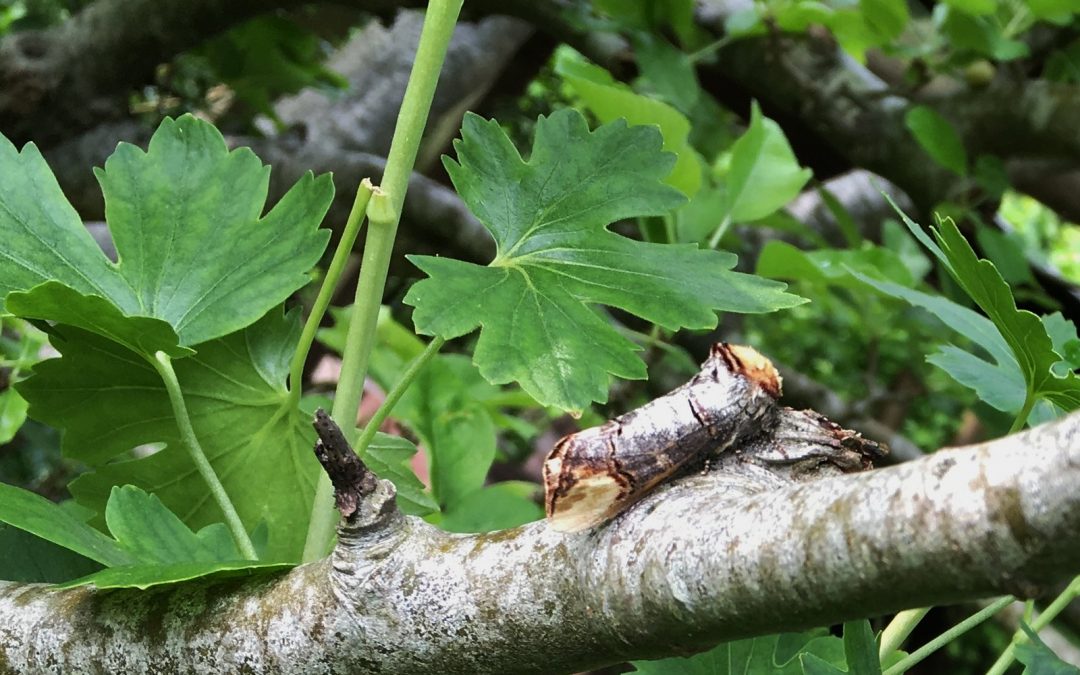As part of the celebrating 25 years of gardening at The Bath Organic Community Garden (BOG) Bath NATs had the chance of an early morning visit to the garden which is found near Victoria Park. Together with volunteers from BOG we explored a green urban space dedicated to nurturing the soil and the flora and fauna that benefit from an organic approach to horticulture.
Richard Pooley guided us through the moths that we might find active at night in an urban garden nearly. It was with some fascination that the group examined the moths close up. Of the twenty different species found there were 16 macro moths. Treble Lines, Charanyca grammica, was by far the most commonly found. Greater Plantain, Plantago major, is its food plant of choice; one reason for being an ‘untidy gardener’? Buff-tip, Phalera bucephala, disguised as a birch twig was admired for its sophisticated camouflage.
Younger participants were fascinated by the May Bug, Melolontha melolontha, a serious pest of arable crops but now a much rarer sight as a result of the use of pesticides.
Participants then visited the diverse range of habitats that are found in just one acre of land. The woodland area affords a space for herbs such as Lungwort, Pulmonaria officinalis, and Herb Robert, Geranium robertianum, the crushed leaves of which make a good a midge repellent. The pond is a haven for invertebrates including dragonfly and damsel fly nymphs.
The Common Darter, Sympetrum striolatum, was spotted as the sun came out. The orchard provides shelter and food for a range of vertebrates including Britain’s smallest breeding bird, the Goldcrest, Regulus regulus. The Teasel, Dipsacus fullonum favoured by Goldfinches, Carduelis carduelis, in the winter months, was a focus of some discussion. Interestingly its leaf arrangement which results in small water pools around the leaf axils is thought to be a strategy for gaining nutrients as unwary flies that drown decompose!
Thanks go to Richard Pooley and the BOG for hosting the morning. Further information can be found about the garden at www.bathorganic.org.uk


Recent Comments